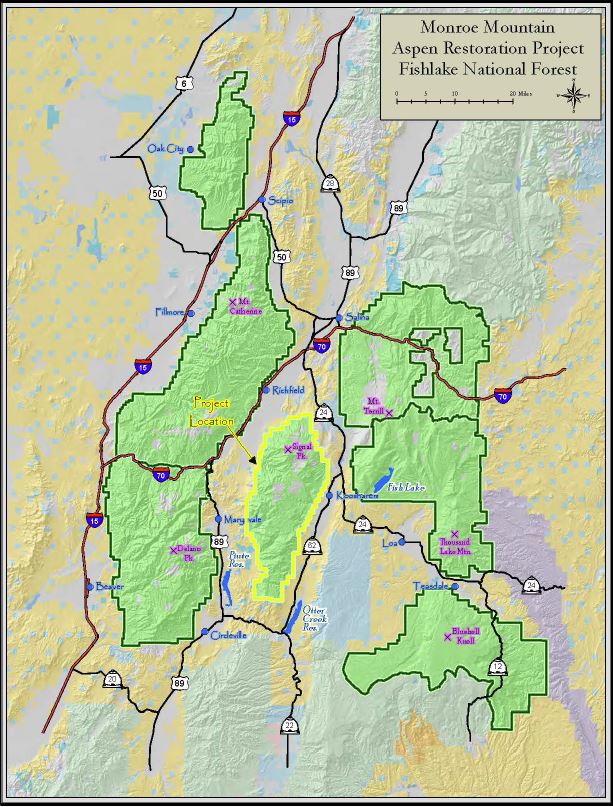|
Logging in Roadless Areas will be Reevaluated After Objection from Conservationists Additional Contacts: John Carter, Manager, Yellowstone 2 Uintas Connection, 435-881-5404 Johnathan Ratner, Utah Director, Western Watersheds
Project, jonathan@westernwatersheds.org SALT LAKE CITY — A coalition of conservation organizations is strongly urging Utah’s Fishlake National Forest to leave roadless, undeveloped forests out of a logging plan. In response to an official objection filed by three groups, the forest will further consider the impacts of developing pristine forests. WildEarth Guardians, Western Watersheds Project and Yellowstone 2 Uintas Coalition describe the Monroe Mountain Project as the largest logging project to date inside Inventoried Roadless Areas protected in 2001 by the Clinton Administration. In response to the October 5, 2015 objection, the Richfield Ranger District received instructions to more carefully consider the impacts of logging in roadless areas. Though encouraged by the directions, the groups say they don’t go far enough to ensure about 9,000 roadless acres are protected from logging, and fails to address the root cause of the decline of aspen forests: overgrazing by livestock and elk herds. “Most wouldn’t think Utah is where the biggest roadless area logging in the country would emerge,” said Guardians’ Kevin Mueller “But it has, and we absolutely will win in our challenge to this scientifically invalid shock and awe forestry plan.” Located on the ‘Monroe Mountain’ unit of the Fishlake National Forest south-east of Richfield (see locator map below), about 14,800 acres total of logging would be approved. The roadless logging objections concern the roughly 9,000 acres of that which is inside the protected undeveloped areas. Several times that would also be prescribed burned with mixed and high intensity fire. This ‘shock and awe’ style forestry is at the expense of overlooking the biggest root cause of aspen decline. “Monroe Mountain clearly has too many livestock, but the decision fails to deal with this fundamental cause of the aspen problems. We only see a weak ‘wish list’ of maybe actions. The Forest Service has again put the interests of a few ranchers above the long term health of public lands” In 2004 WildEarth Guardians successfully stopped the prior iteration of this plan at the 10th Circuit Court of Appeals. The court overturned that EIS due to Forest Service failure to monitor its own management indicator species. That earlier plan included significant clearcutting inside roadless areas.
|
|
|
info@wildearthguardians.org | © WildEarth Guardians | Historical Archives | Privacy Policy

